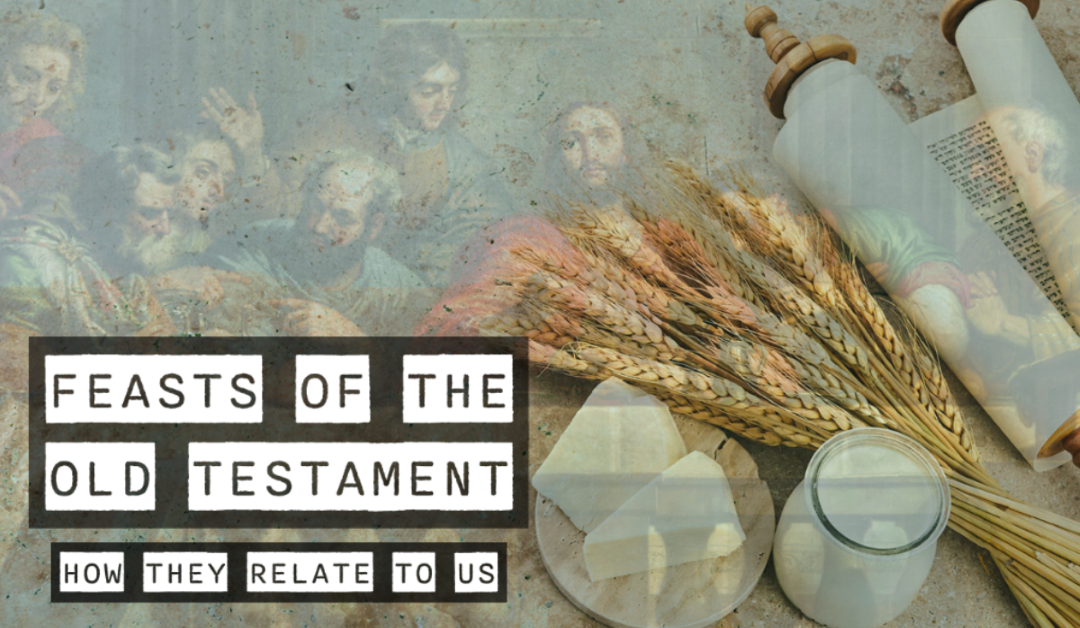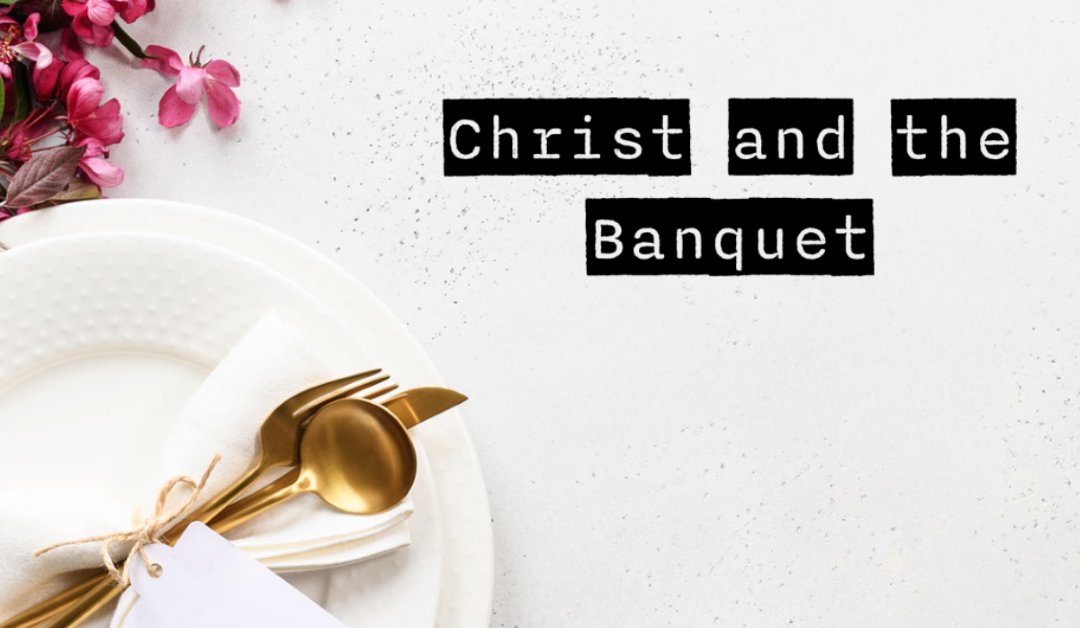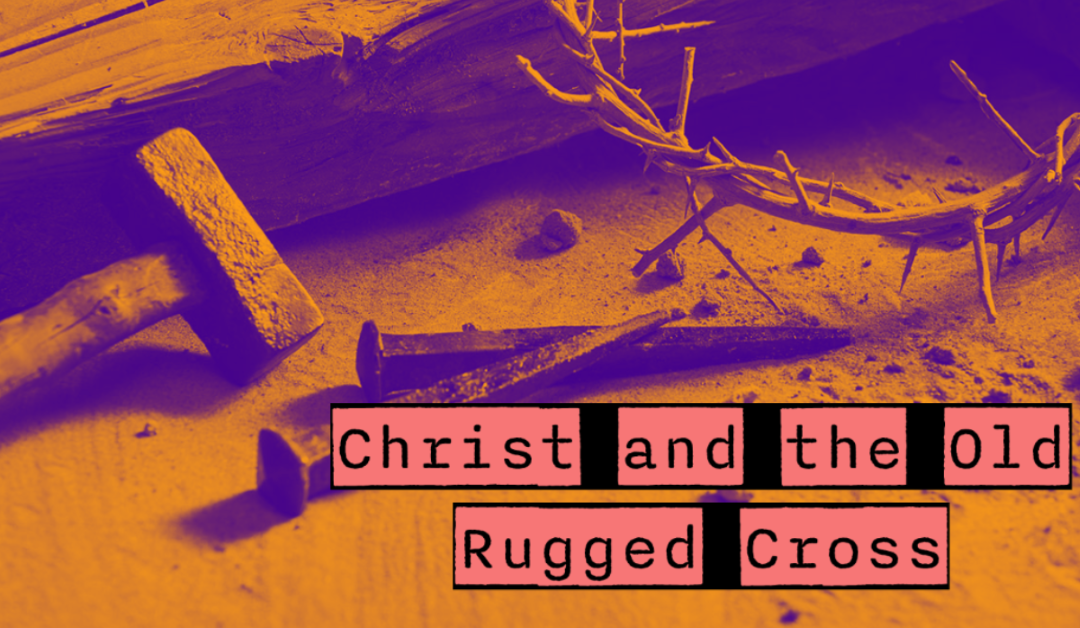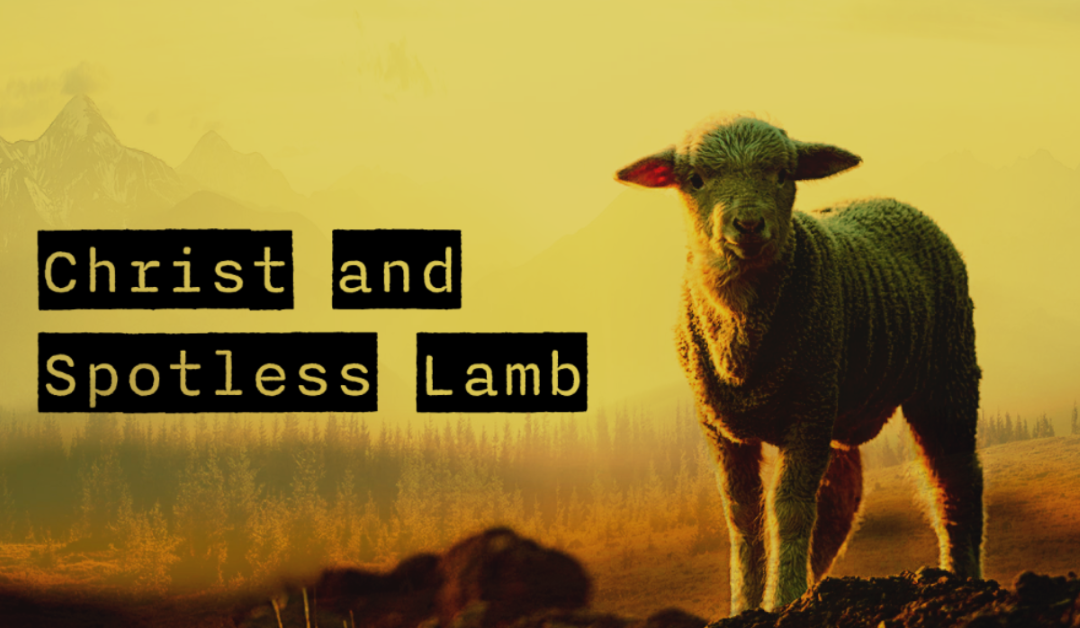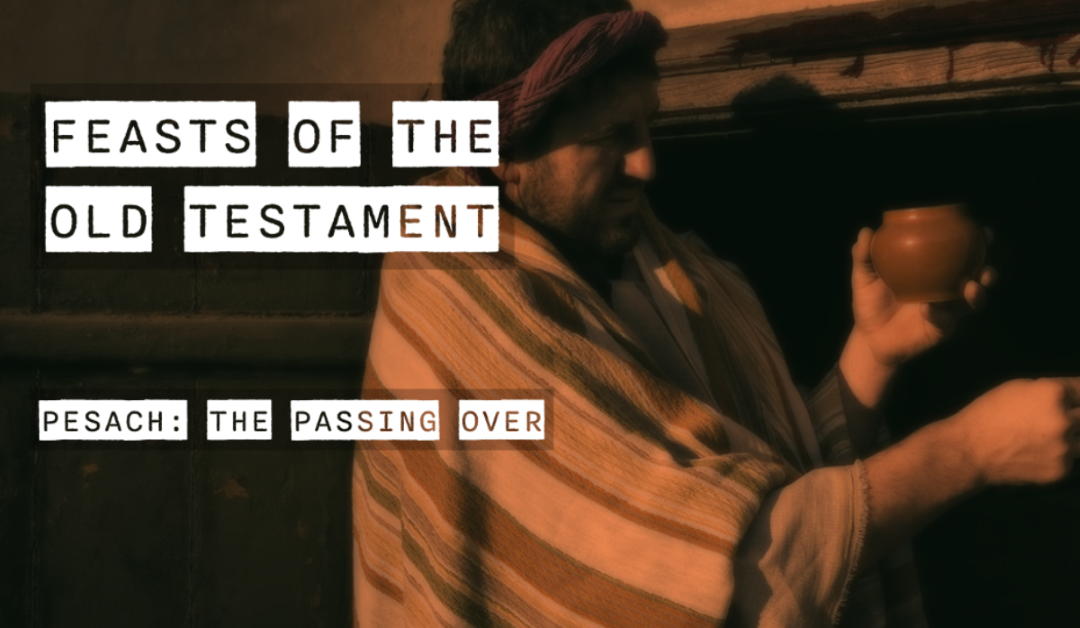
FEASTS: Pesach / Passover
Historical Survey – What Happened?
In Exodus we read about a man called Moses. He is noted as one of Israel’s greatest leaders – a prophet – a man of God. When he was still an infant, the pharaoh (afraid of a possible uprising/rebellion) ordered all the male children to be cast into the river, as soon as they were born. His mother, a Levite, saw her son and couldn’t bear to let him go, and thus she hid him for three months. After this period of time had passed and she could keep him hid no longer, she put him in a basket and laid it in the flags of the river.
The Bible says that his sister stood afar off – to wit what would be done to him. She was curious and wanted to see what would happen to her baby brother. Pharaoh’s daughter found him and had compassion on him. He grew up in the Palace, as royalty.
When he had come of age though, he found himself wandering about the city – and he saw the plight of his brethren. I think he probably walked the city streets a lot – his heart tugging at his sleeve, beckoning him to follow. I feel God opened his eyes to see the harsh reality that the Israelites had to endure – and it moved him to anger.
It was on one of these days that he saw an Egyptian smiting one of his own. To smite is to strike or inflict a blow – in this case, upon a Hebrew – and this struck a violent chord within his heart. It angered and dismayed him – and because of these feelings he struck out smiting the Egyptian, he slew the Egyptian man and laid him in the sand.
News of this reached Pharaoh and he sought justice – he wanted to kill Moses – but Moses fled and retreated to the land of Midian.
Here he met his wife, the daughter of a priest named Jethro. He married Zipporah and tended his father in law’s flock. In a sense this could’ve been a strange foreshadowing of what his future would have in store for him.
It was while leading Jethro’s flock, to the backside of the desert, that he came to Horeb – and it is here that the Lord appeared unto him in a flame of fire in the midst of a bush. Here, in the third chapter of Exodus, the Lord appears unto Moses in a Burning Bush and calls him to tend to His flock – to be a shepherd of a different kind.
God sends Moses back to Egypt with one thought: Set my people free. This must’ve been a terrible thought.
The writer Stephen M. Miller writes concerning Moses: “If he had wanted to go to Pharaoh, who thought himself a god, the last thing he wanted to do was tell Pharaoh that the real God said to release the Hebrew slaves used as cheap labor on pet projects. Moses was an old shepherd. He wanted to get older.”1
Yet, Moses went and we read in Exodus about the ten plagues that followed – the tenth being the most terrible. It is here where the Pesach is instituted.
God instructs the Hebrews to take a lamb, each according to his house, an unblemished lamb without spot. This lamb was to be slain and its blood painted on the door posts – the two side posts and the upper doorpost.
According to Dr. Richard Booker this was known as a threshold-blood covenant.
“Humankind’s earliest primitive altar to the one true God, as well as false gods, was the threshold or entrance into the home. The threshold altar was the place where people made their sacrifice to their gods. The purpose was to request protection from the family deity as well as inviting the deity into their house.”2
He says the blood smeared on the doorposts was a similar act – that it was an invitation for God to be present in that house as protector – He would stand in the doorway to keep the destroyer at bay.
On that faithful night the Hebrews ate the roast lamb and stayed in their houses and the angel of death moved through Egypt and smote the firstborn in every house it passed.
Flavius Josephus wrote: “Whence it is that we do still offer this sacrifice in like manner to this day, and call this festival Pascha which signifies the feast of the passover; because on that day God passed us over, and sent the plague upon the Egyptians; for the destruction of the first-born came upon the Egyptians that night, so that many of the Egyptians who lived near the king’s palace, persuaded Pharaoh to let the Hebrews go.”3
The plague came upon the Egyptians and they were dismayed. The Pharaoh called Moses to the Palace and
As Josephus wrote: “Accordingly he called for Moses, and bid them be gone; as supposing, that if once the Hebrews were gone out of the country, Egypt should be freed from its miseries.”4
So, the feast was called the Passover because it signified the night that God passed over and sent the plague upon the Egyptians.
It signified destruction to those who had not made the threshold-blood covenant with God, but life to those who had invited God into their homes as protector.
This feast is one that reminds us of God’s power and love – of how He delivered his people from the slavery of the Egyptians.
The Jewish historian, Martin Gilbert, wrote a series of letters to an elderly Jewish woman living in India. These letters explored Jewish history and culture in detail, and it is in these letters that we read: “So central is the story of the Exodus to Jewish life and tradition – as it was to Jewish survival – that Passover comes first in the calendar of Jewish festivals.”5
He makes a statement earlier in his book that enforces my hypothesis in the first section of this project: “For several thousand years Jewish laws and traditions have held the Jews together as an identifiable group. As Jewish communities grew and were dispersed throughout the globe, their traditions and beliefs linked them, however far apart they were.”6
We see that this festival is crucial to Jewish identity – they have been called out of slavery – led out of Egypt by the mighty hand of God.
Socio-Cultural Survey – What Happens?
Every year in the Hebrew month of Nisan the Passover Festival is held. During this time they celebrate the Exodus from Egypt – families gathering at home, often with many guests, to recall the miracles of the ten plagues and the parting of the Red Sea.
Regular cooking utensils, dishes and cutlery are put away and special ones (designated for use during the Passover only) are brought out for the week of festivities.
The only bread eaten during the festival is made without leaven and is called Matza (Matzot – plural).
The Saturday before Passover is known as ‘Shabbat ha-Gadol’ – the Great Sabbath. On ‘Shabbat ha-Gadol’ a portion of the Passover recitation is read and the whole Passover story is explained by a rabbi.
Pesach
The first night of the ceremony is known as the ‘seder’ (meaning order).
On the ‘seder’ night a lamb shank is placed on the table to remind them of the night that God ‘passed over’ the Hebrew first-borns whilst slaying those of the Egyptians.
Accompanying the shank on the table are bitter herbs. These herbs remind us of the bitterness of life under Egyptian rule. There is also a fruit paste called ‘charoses’ eaten at Passover as a symbol of the mortar the Jews had to mix when making bricks for the Pharaoh.
The ‘seder’ begins with the youngest child at the table asking ‘Why is this night different from all other nights?’
The answers to this question and others that follow are answered by those present, turn by turn around the table. There is a discussion about the historic Passover and its meaning, prayers before and after the meal, Psalms, songs and stories. All of these are set in a book called the ‘Haggadah’.
The reading of the Hagaddah before and after the meal is done with much chanting – and the dozen or so songs are sung with enthusiasm, enough to rouse even the sleepiest youngster.
Among Moroccan Jews and those of Moroccan origin, the last evening of Passover is a time for people to go door-to-door to wish each other a happy year.
It is also customary for the whole community to go out, on the day after Passover and recite a blessing over the trees.
Unleavened Bread
Bread plays a large role in this festival. The night before Passover there is a ceremony called the Chametz search. During the festival (Passover) a distinction is made between two kinds of bread. Chametz and Matzah. Chametz is bread with leaven, the term though is also extended to all non-kosher foods and the cooking utensils associated with them. Matzah however is unleavened bread. For the Seder nights a special kind of Matzah is prepared, this is called Matzah Shmurah – meaning watched or guarded matzah. This matzah is followed closely from the time of harvest throughout the baking process to ensure that it stays unleavened.
The Chametz search takes place the evening before Passover, and during this time the family searches for any traces of Chametz. This is a ceremonial and dramatic, yet serious practice. All the lights in the house are darkened and the head of the family recites a blessing by candle light after which he leads his family in the search for Chametz. It has become customary for a responsible member of the family to place crumbs or small pieces of bread throughout the house. These pieces are gathered with a feather and a wooden spoon.
These pieces of Chametz are ceremonially burned the next morning.
So serious is this ceremony that after the burning of the Chametz a declaration is made: “Any chametz or leaven that is in my possession, whether I have recognized it or not, whether I have seen it or not, whether I have removed it or not, should be annulled and become ownerless, like dust of the earth.”7
Prophetically the importance of this ceremony is not lost, but I will get there in a moment.
Firstfruits
The Feast of the Firstfruits was to be celebrated on the day after the Sabbath, and it is generally accepted that the Sabbath referred to is the weekly Sabbath.
Before any barley produce of the new crop could be eaten, or even touched, an omer had to be brought to the temple as a sacrifice unto the Lord. The purpose of this was to consecrate the harvest to God. The firstfruits represented the whole harvest. They had received the Promised Land from God’s hand and therefore they were but stewards of the land and its produce. This sacrificial act reminded them that God had given them the land and that the harvest was rightfully the Lord’s.
Prophetic Survey
Bethlehem is translated (from the Hebrew language), by James Strong, as ‘House of Bread’ (the Arabic form – Beit Lahm – translates as ‘house of meat’).8
According to Webster’s Dictionary9 the name Bethlehem has been corrupted and changed to Bedlam (through speech and linguistic ‘evolution’ – although deterioration would be a better word) – and such changes often have interesting results for interpreters and critics of all disciplines. Bedlam generally refers to a place appropriated to the confinement and care of the insane – for example a madhouse, but can also refer to a place where uproar and confusion prevail.
Bethlehem was the birthplace of Jesus, and it was here that Jesus was born into a bedlam of pagan origin – a world filled with sin and death – where pagan gods were worshiped and whole towns and villages were built according to the needs of these false deities10 – it was here that the Bread of Life was born to heal the insane of their infirmity – to set the captives free and overwhelm the kingdom of darkness – to bring light in a world where darkness reigned.
Jesus was the Lamb of God – spotless and without blemished. His blood was spilt to cover our iniquities and our sins – and His blood is painted on the doorposts of our heart, if only we choose to enter a threshold-blood covenant with Him – when we choose to invite Him into our hearts as our savior and protector.
Those whose doorposts are painted with the Blood of the Lamb, the will be saved from certain destruction and death.
Those who partake in the sacrifice of Christ shall receive peace that surpasses all understanding and will be able to rest assured in God’s mighty hand – secure in the knowledge that He is our rock and our salvation – His hand rests upon His children – a mighty fortress, a strong tower to shelter the righteous.
The Matzah can be seen as a type of Jesus since He is bread without leaven, watched through every temptation and trial and found without sin.
The annual search for the chametz is done by candle light and should be done as soon as possible after nightfall.
For the believer in Christ this aspect of the Passover has great importance – as soon as we realize our situation, that we are caught in darkness and sin, we must take the light that is God’s Word (The Psalmist calls it a lamp unto his feet and a light unto his way) and search for all traces of sin and eradicate it from our lives. We have to search for those undesirable characteristics of the flesh and ask God to consume it with His righteous fire. To burn away our sin, fear and doubt and purify us in the flames of His love, mercy and grace.
Dr. Richard Booker states the following in his book ‘Celebrating Jesus in the Biblical Feasts’: “As with the Feast of Unleavened Bread, it too relates to our condition as believers in and followers of Jesus. These feasts show the two different phases of Christian commitment that are necessary to change our spiritual condition. These two phases are separation and consecration.”11
These feasts point to Christ as the Lamb of God, the Bread of Life and the Firstfruits from the Dead.
He walked the earth as ‘unleavened bread’ without sin – and was found as the Spotless Lamb without spot or blemish. Finally, He died for our sins taking all our burdens upon Him to restore us and He was resurrected from the dead as the Firstfruits from the Dead.
Paul writes:
11 But if the Spirit of him that raised up Jesus from the dead dwell in you, he that raised up Christ from the dead shall also quicken your mortal bodies by his Spirit that dwelleth in you. (Rom 8:11)
The first aspect of the festival, the Pesach, is symbolic of Christ’s sacrifice for us.
The second aspect of the festival, the Unleavened Bread, symbolizes separation – the distinction between Chametz and Matzah – the righteous from unrighteousness.
Finally we find, in the third and final aspect of the Passover festival, eternal life in Christ Jesus.
Just as the firstfruits were waved to God as an act of consecration – consecrating the whole harvest, the resurrection of Christ (our intercessor) consecrated all of us (the whole harvest).
The Passover, therefore, doesn’t only remind us of the Israelites Exodus from Egypt, but also of our own journey, our own Exodus from the kingdom of darkness – for Jesus has called us out of the darkness and into His light – He has come to set the captives free.
We can rejoice, with our Jewish brothers and sisters, secure in the knowledge that our God is great and merciful and that He is salvation to those who cling to Him.
Amen.
1 Stephen M. Miller, Who’s who and Where’s Where in the Bible (Miller, 2004)
2 Dr. Richard Booker – Celebrating Jesus in the Biblical Feasts (Booker, 2009)
3 Flavius Josephus – The Antiquities of the Jews (chapter 14) (Josephus, 2001)
4 Flavius Josephus – The Antiquities of the Jews (Josephus, 2001)
5 Martin Gilbert – Letter 112 (Gilbert, 2002)
6 Martin Gilbert – Letter 104 (Gilbert, 2002)
7 The Artscroll Siddur – The Search for Chametz/Leaven (Scherman, 1990)
8 Strong’s Handi-Reference Concordance. (Strong, Strong’s Handi-Reference Concordance, 2006)
9 (Porter, 1913)
10 One example of this is a town called Beth Shan, a very impressive place which had hundreds of enormous Greek style columns lining the main street, running from perfect east to almost perfect west. They set that city up on an east/west axis in part so you could get a good last look at the sun before it set at night but also to make it
easier for the many sun worshippers who lived in that town. This town was a little bit south of Tiberius, a city on the Sea of Galilee.
11 Dr. Richard Booker – Celebrating Jesus in the Biblical Feasts (Booker, 2009)

